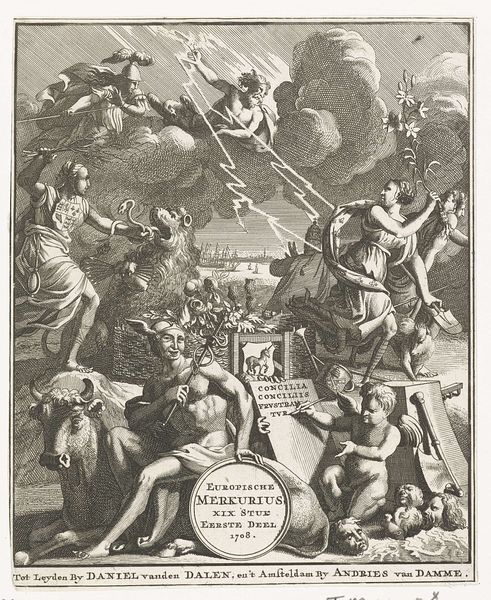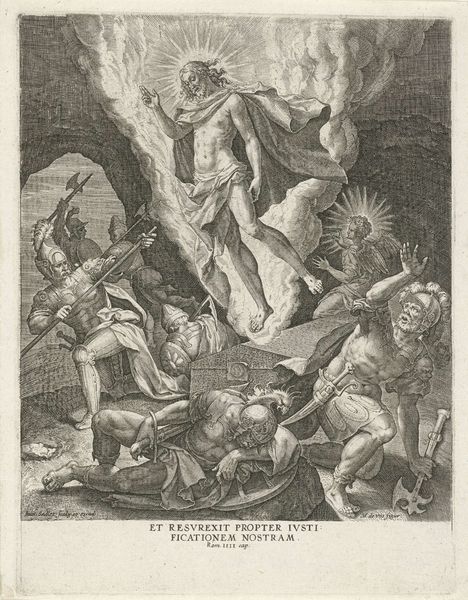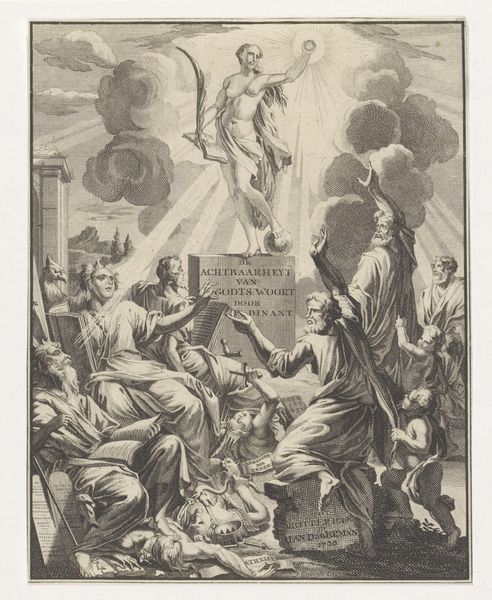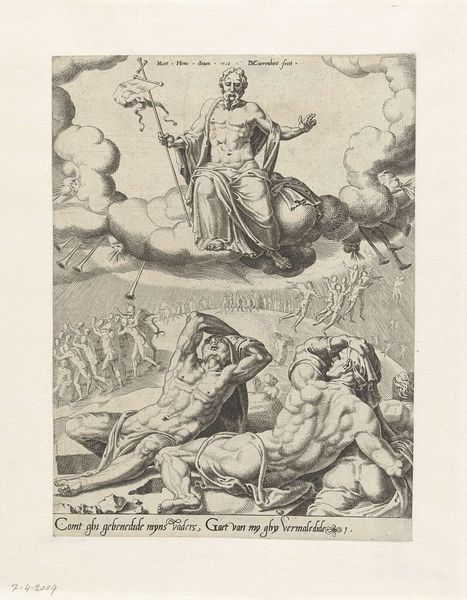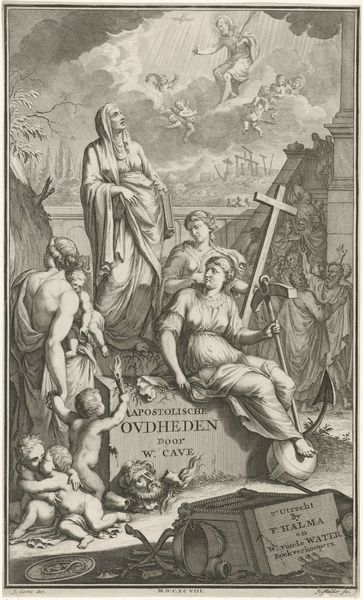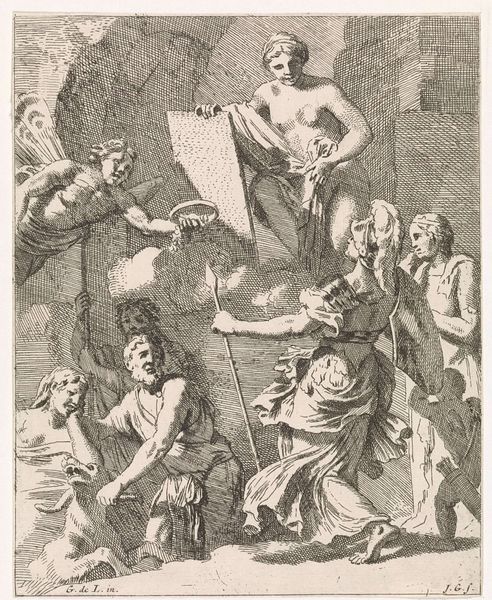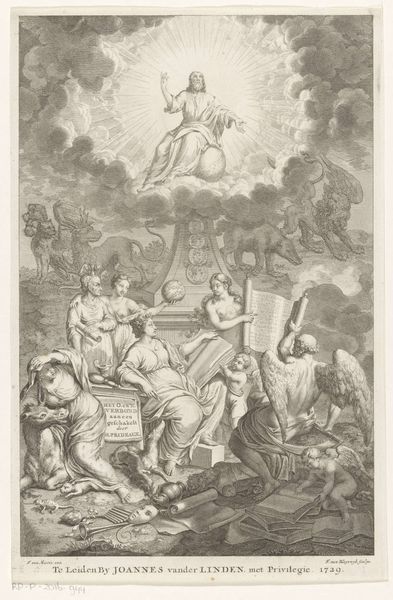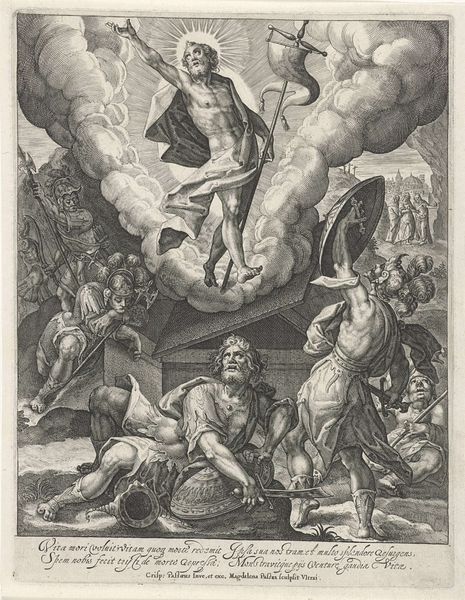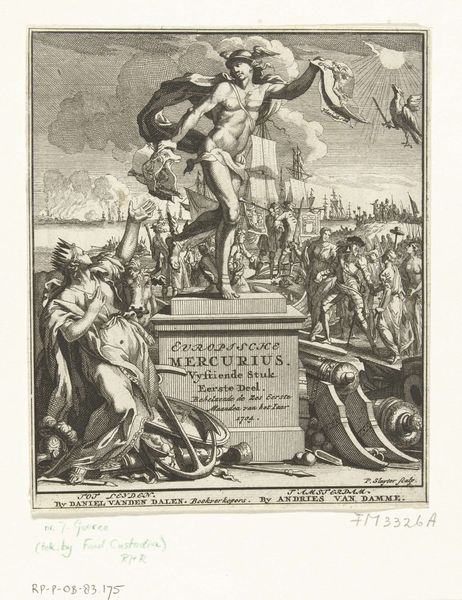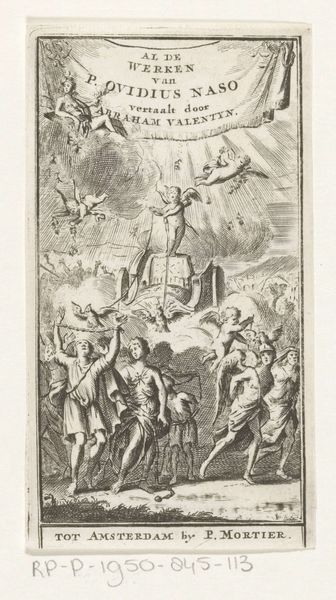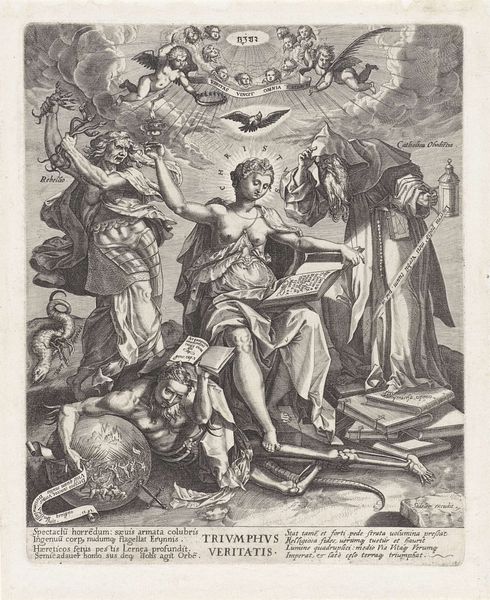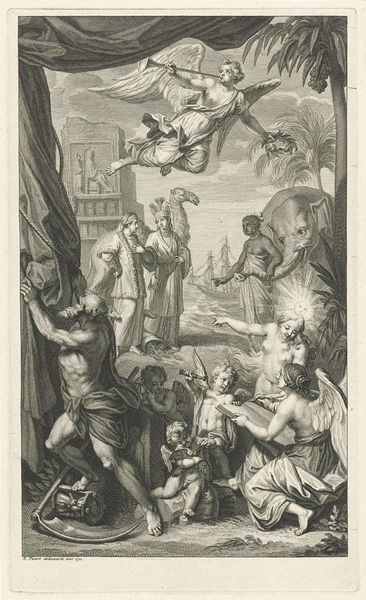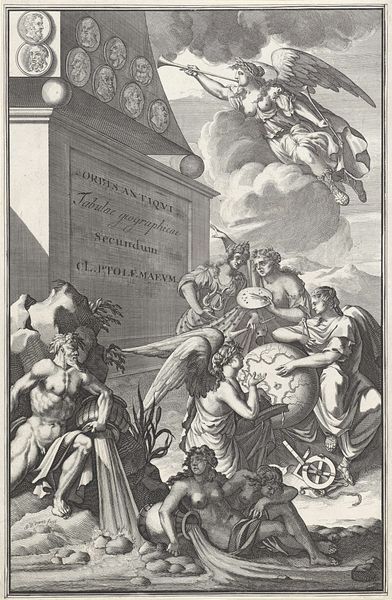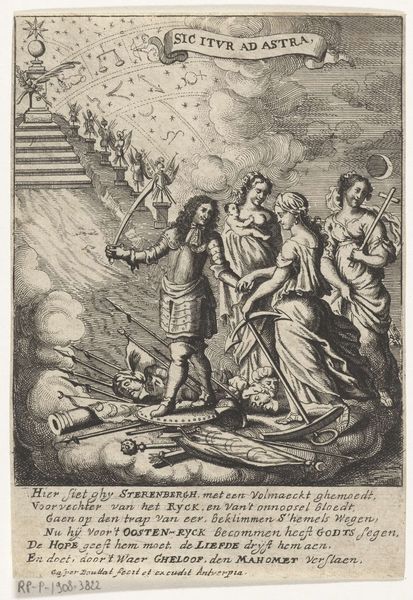
print, engraving
#
allegory
#
baroque
# print
#
figuration
#
geometric
#
line
#
cityscape
#
history-painting
#
engraving
Dimensions: height 189 mm, width 146 mm
Copyright: Rijks Museum: Open Domain
This engraving, Allegorie op de geografie, was made by Joseph Mulder in the late 17th century. The processes involved in making such a print start with an image carefully incised into a metal plate, likely copper. Ink is then forced into these lines, and the surface is carefully wiped clean before being pressed onto paper. The sharpness of the engraved lines allows for an incredible amount of detail. Note the textures of the robes, the musculature of Atlas, and the fine lines that delineate the maps held by the cherubic figures. Engraving like this was at the heart of early modern information culture; it was an essentially reproducible medium, allowing images and ideas to spread widely. But don't think of it as simply a proto-industrial process. The engraver's skill was highly prized, and each print was the result of painstaking labor. In this work, the convergence of craft and the burgeoning world of mass communication is clear.
Comments
No comments
Be the first to comment and join the conversation on the ultimate creative platform.
